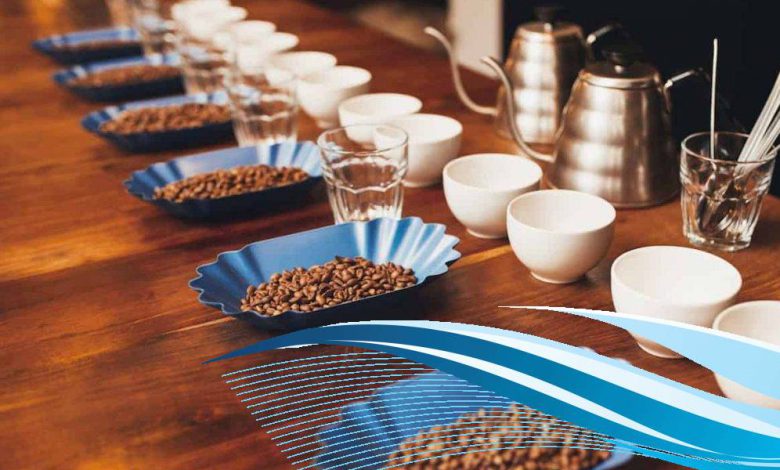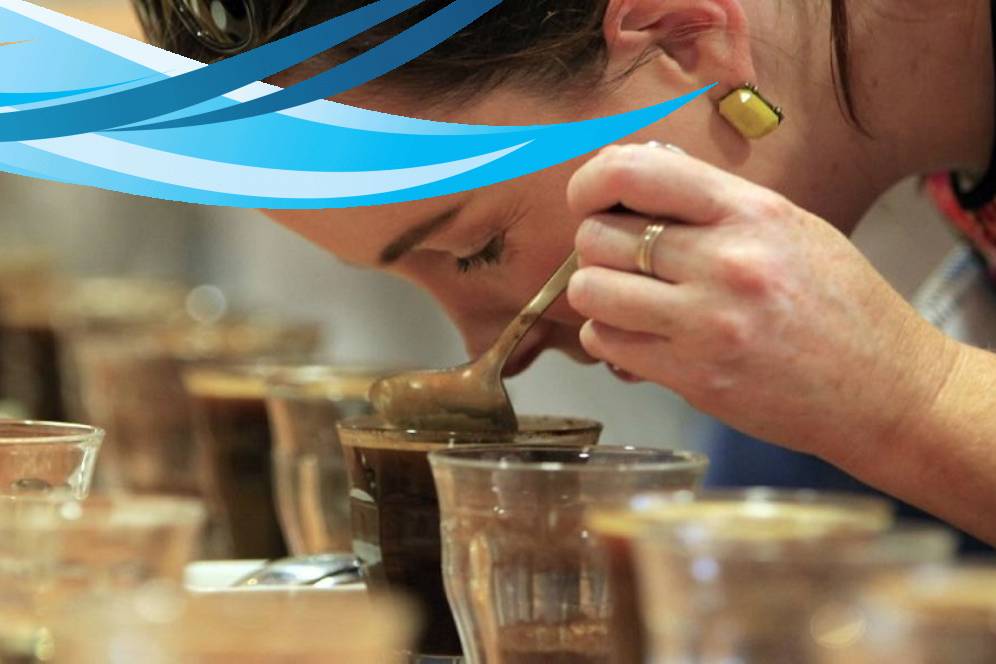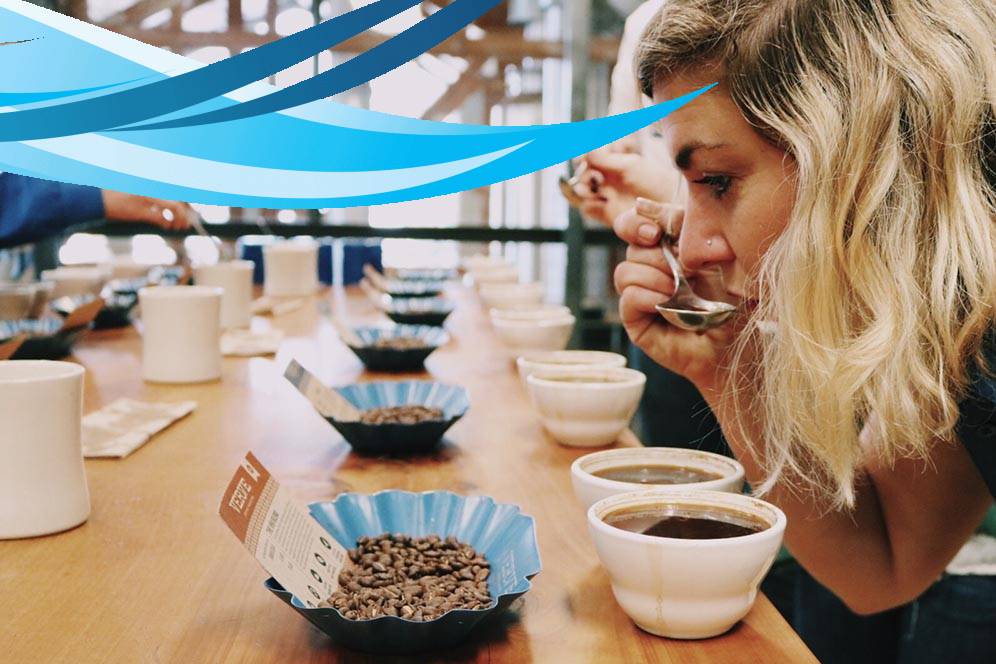Guide To Coffee Cupping At Home – Sensory Perception And Evaluation Of Coffee

Do you know what’s the main reason for coffee cupping? Scoring coffee for the aspects like sweetness, acidity, aroma, and aftertaste is the main reason for coffee cupping. Many buyers and producers all around the world use this method to evaluate the quality of different cultivars of coffee.
This method is a tasting technique that is usually used by professionals. It has a protocol. Based on this protocol, you should pour hot water on freshly ground and roasted beans. Then, allow it to steep for several minutes.
By allowing the flavors to emerge, it’s time for tasting the fresh drink in order to score the coffee. Remember to avoid burning your tongue, it is necessary to let your drink become a bit colder.
Some professionals, taste tens of (even more than 200 hundred) cups each working day to score them. Perhaps, you can try this method and enhance your ability in coffee cupping. But, it’s not as easy as you think.
Let’s discuss a bit more about it:
Contents
What is the purpose of coffee cupping?
Coffee cupping is considered an excellent method for enhancing our knowledge about coffee.
It can help you to identify the available differences between different coffee products in the market. As you know, we have different cultivars. Also, there are different regions and several countries that are among coffee producers in the world.
So, it is a good idea to score their products based on their quality and taste.
This is the main reason many producers and buyers need to use this tasting technique to evaluate the quality of each cultivar.
It’s quite interesting to know that some experts try more than 2 hundred cups of coffee each day to score them based on several quality factors.
For some people, it is not easy to imagine how one person can identify the quality of coffee and understand the minor differences by tasting a spoon of fresh drink.
They are surprised to learn about how someone can discover coffee flavors.
Of course, exact comparisons of different products are not easy and need experience.
What is a coffee cupping score?
Cupping scores are similar to the scores we give to other products, services, etc. A higher score is a sign of better quality. in this case, a higher score is a sign of a specialty coffee.
remember, if you are looking for a specialty coffee, scores higher than 80 points are known as a sign of good quality. Coffee with scores lower than 80 points are not considered a specialty product.
Here, the main question is that how can we calculate the score for different cultivars.
The answer is that coffee is scored based on a standard scale. The points in this standard are usually in the range of 6 to 10.
Each point is given for a different category. There are ten categories. This means the sum of the points will fall in the range of 60 to 100.
Anything lower than 80 to 60 is considered as a bad score. While anything higher than 80 to 100 is a sign of good quality and a sign of specialty coffee.
In each category, one property like what we’ve listed below is evaluated:
- Aroma
- Flavor
- Acidity
- Balance
- Body
Reasons for using coffee cupping
In the above, we’ve briefly explained the main reason for cupping. Learning about the acidity, body, aroma and other properties of each cultivar can be an important reason for tasting different kinds of coffee.
Remember, similar to different types of wine, it is possible to find endless tastes and flavors in different coffee products.
The flavor of coffee is directly affected by different factors relating to growing conditions like altitude, weather, and using micronutrients during cultivation. Actually, the main reason for having different flavors is the differences between soils and the cultivar.
For example, Kenyan cultivars are usually acidic. While Ethiopian cultivars are more delicate and floral.
It is worth mentioning that the taste of coffee after harvesting is also affected by several factors. This means the cultivar or growing conditions are not the main factors that give the coffee endless flavors.
Processing of coffee can be a reason for having different tastes. Also, transporting the product, brewing, roasting, grinding and even the water which you use for making your drink can have a great impact on the coffee cupping score.
So, anything that goes wrong before making your cup of coffee ready can have an adverse effect on the cupping score. by now, perhaps you know about all the reasons that buyers and professionals use this technique to score coffee.
What are the 4 steps of coffee tasting?
Coffee tasting is possible by going through several steps. Some people divide this process in 4 steps. But, to be more accurate, coffee cupping may have even more steps.
Smell the coffee
As we mentioned above. Aroma is a defining factor in scoring coffee. So, you can consider smelling the coffee as the first step for cupping.
Brewing coffee
After smelling the coffee, it’s time to pour hot water on the grounds and let is steam. As a main step, this is the well-known brewing process.
Again after brewing, you can smell the drink to compare the aroma of different cultivars.
By skimming the grounds that float on top of the coffee, you can enter the third step which is the main step for scoring.
Tasting the drink
By tasting each cup, it is possible to score each cup by considering quality factors. It is the best time to take note about the acidity, flavor, and body of each cultivar.
Discussing the scores
Finally, all the participants can discuss the scores. In this step, each person can use his or her notes to sum up the results and give an overall score to the cupping.
Note that the steps we mentioned above are not always necessary. To be more accurate, a professional may give the scores based on the following steps:
- Evaluating the green coffee beans (only for the connoisseurs who are working for large brands)
- Evaluating the grounds
- Smelling the coffee gasses and examining the aroma
- Tasting a small amount of coffee with a spoon
- Describing the body and the feel of the coffee
- Describing the aftertaste of the drink to know how the flavor lingers and finishes
- Checking the acidity across the palate
- Identifying if the flavor and body are balanced
Finally, remember that the steps depend on the case and importance of coffee cupping for a buyer, producer, or brand. Perhaps, several experts should try the process above to get a better result.
What is a coffee connoisseur called?
A coffee connoisseur is in fact a professional who is able to test the coffee before the product is pushed out to the consumers.
“Coffee sommelier is another term that is used to call the professionals or coffee connoisseur.”
The term is similar to the wine sommelier which is used for experts who are capable of evaluating wine quality.
Perhaps, some people think that it’s an easy job to drink and score coffee. For sure, drinking coffee is easy. But, evaluating and scoring of the drink by a coffee sommelier is far from easy. Why?
As an expert, you should have experience. For example, you need to have enough knowledge about:
- How to distinguish different aromas and scores by smelling?
- How to compare different flavors and describe them?
- Where is the bean origin?
Also, an expert should have experience in the brewing and roasting processes. Transporting and grinding of the beans as well as having experience with the blends and their effect on the flavor is also important in coffee cupping.






